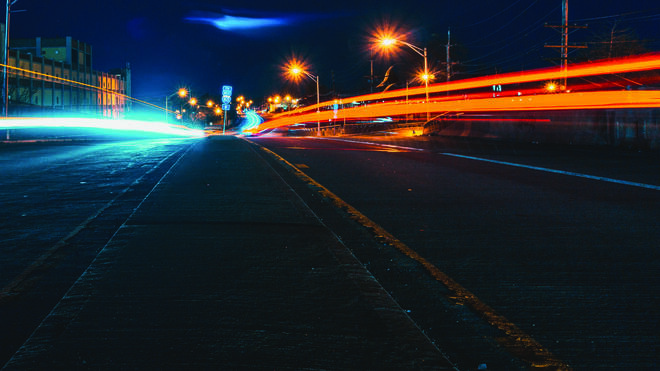Illuminating the Path to Public Safety: The Role of Smart Street Lighting

In pursuit of safer streets, lighting is imperative not only for reducing vehicle and pedestrian collisions but also for deterring criminal activity. Today, the role of lighting extends far beyond visibility - smart lighting for crime prevention is now a central strategy in urban safety planning.
A Quantifiable Impact on Safety
Proper lighting significantly improves driver visibility and awareness. Depending on the context and implementation, upgraded lighting can reduce fatal midblock vehicle crashes by up to 50%. Poor weather conditions like fog or rain can limit the benefits of standard lighting - which is why adaptive, intelligent systems are essential.
Smart streetlights use sensors and management software to adjust LED brightness and temperature based on traffic volume, time of day, and weather conditions. These dynamic adjustments ensure lighting is always optimized for safety.
Download the Lighting Improves Safety Infographic
A Powerful Public Safety Tool
Modern streetlights are no longer just sources of illumination—they are fully integrated safety nodes. With platforms like UbiHub®, cities are now equipping their lighting infrastructure with license plate recognition (LPR), two-way audio, and AI-powered video analytics processed directly at the edge.
These tools provide actionable intelligence to law enforcement and city planners—tracking vehicle movements, identifying loitering or illegal dumping, and flagging unusual patterns in real time. By shifting from reactive lighting maintenance to proactive infrastructure monitoring, cities gain not only improved safety but operational efficiency as well.
This level of awareness also supports more sustainable and cost-efficient operations, as explored in the blog Are You Still Driving Around Your City to Find Streetlights That Are Out? There Is a Better Way!—a real-world look at how cloud-based lighting platforms cut costs while improving public trust.
Crime Deterrence with Smart Lighting
Lighting remains one of the most accessible and cost-effective crime deterrents. A 2016 study in NYC public housing reported a 36% drop in nighttime outdoor index crimes after brighter lighting was installed.
More recently, a February 2025 study in Philadelphia revealed a 15% reduction in outdoor nighttime street crime and a 21% decline in outdoor nighttime gun violence following a citywide upgrade to LED streetlights. This large-scale evaluation provides some of the most robust evidence to date on the public safety benefits of lighting.
Beyond illumination, today's smart streetlights enable cities to respond to incidents in real time. Operators can immediately brighten areas in crisis, enable video verification, and access recorded footage for forensic review. With LPR and edge-based AI analytics, authorities can swiftly identify vehicles involved in crimes and detect behavioral anomalies like rapid crowd formation or boundary crossing—capabilities that dramatically improve emergency response.
A 40-year review of CCTV effectiveness showed a 13% reduction in overall crime, especially when cameras were visible and monitored. Today, AI streetlight analytics elevate these benefits by detecting threats automatically - such as loitering, boundary crossing, or rapid crowd gathering - without human oversight.
Government Guidance & Public Safety Infrastructure (2024–2025)
Recent guidance from the U.S. Department of Justice and Department of Transportation supports investments in intelligent infrastructure that promote safety, equity, and sustainability. Smart lighting is now seen as a foundational element of modern, resilient cities.
With increasing momentum behind ESG-focused infrastructure funding, smart lighting technology now plays a critical role in helping cities achieve safety and environmental benchmarks simultaneously. Platforms like UbiHub® allow municipalities to meet these expectations through integrated lighting, communications, and monitoring capabilities—all outlined in the whitepaper Using Streetlights to Enhance Public Safety, Reduce Crime, Improve Environment, and Grow Economy.
Real-World Deployments
Cities across the country are realizing the benefits of smart lighting technology. San Antonio, Fort Lauderdale, and West Hollywood are just a few examples of municipalities that have implemented UbiHub® systems.
Each of these deployments demonstrates how layered, responsive streetlight platforms contribute to more resilient urban planning and stronger community relationships. For example, in smaller municipalities where resources are limited, smart lighting is becoming the backbone of public safety, as showcased in the blog How Smart Street Lights Boost Safety in Small Cities.
A New Standard for Public Safety
Smart street lighting is no longer optional - it is foundational to future-ready cities. With the integration of AI streetlight analytics, license plate recognition, and adaptive LED controls, cities are proactively shaping safer, smarter urban environments.
By leveraging innovative tools like UbiHub, municipalities can address today’s safety challenges while preparing for tomorrow’s demands. From preventing crime to enhancing traffic safety, smart lighting leads the way in urban safety technologies 2025.

